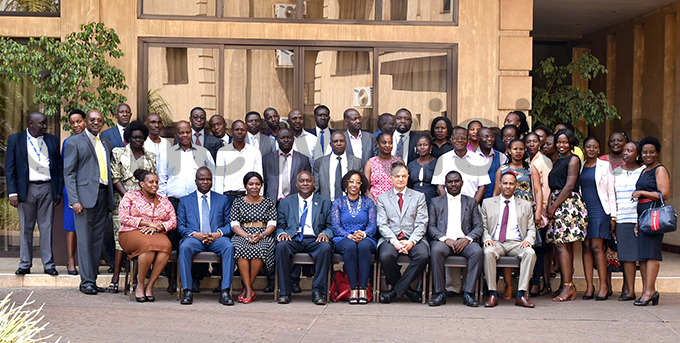Cross-generational sex behind rising HIV prevalence
The average national HIV prevalence is 6.4% but in women, it stands at 7.6% and men 4.7% in varying age groups
The rising HIV prevalence among young women aged 15-25 has been attributed to cross-generational sex with men aged 45-49.
Uganda AIDS Commission (UAC) director general, Dr Nelson Musoba revealed that 30% of the new HIV infections in the country are amongst that young age group.
Cross-generational sex is sexual behaviour between young women and much older men that brings increased health risks and consequences for young women.
In most cases of cross-generational sex, the women are ages 15 to 19 and unmarried; their male partners are at least 10 years older.
Musoba said men aged 45-49 have the highest HIV prevalence at 14% because this age group has money and engage in sex with young girls.
"It's is a power imbalance and underlying factor of poverty that drives that disparity," he noted.
Musoba said the average national HIV prevalence is 6.4% but in women, it stands at 7.6% and men 4.7% in varying age groups.

Speaking on Tuesday at the launch of financing HIV/AIDS and gender-based violence (GBV) study report in infrastructure projects in Uganda at Protea Hotel in Kampala, Musoba said locations with major infrastructure projects like roads and dams construction are prone to new HIV infections.
Infrastructure projects mainly employ young male machinery and equipment drivers, engineers and casual labourers with daily or monthly pay.
He explained that when young men are away from their families and in new unfamiliar settings, they tend to get multiple concurrent sexual partners who have less bargaining power for protected sex.
"If such a male has a girlfriend or a spouse, they leave them behind and are in a place where they can take on some naughty behaviour. Because of that, they engage in risky sexual behaviours," Musoba said.
He said the women at the infrastructure projects are young and casually employed with less money which makes them vulnerable.
"You have men coming in with money, power and you have women who are disempowered. That is why you see gender based violence, rape taking place and the chances of transmitting HIV is very high because of that imbalance," Musoba said.
The study was jointly funded by the government and Joint United Nations Programme on HIV and AIDS (UNAIDS) in Uganda.

Uganda has championed the mainstreaming of HIV/AIDS in all sectors of the country with benefits that include stigma reduction, behavioural change, and reduction of new infections among others.
The report will lay focus on the mainstreaming aspects of HIV in infrastructure projects.
Of the 181 major infrastructure projects from three randomly selected sectors with a gross value of sh22.9 trillion, only Uganda National Roads Authority had an estimated fund allocated to HIV/GBV at 0.13% of the total construction sums.
Speaking at the same function, acting UN resident coordinator Alain Sibenaler, said the report is instrumental for fulfilling point number 4 of the Presidential Fast-Track Initiative on ending HIV/AIDS in Uganda by ensuring financial sustainability for the HIV response.
Sibenaler appealed to the government to utilize the evidence from the report for better planning and budgeting to end gender-based environment.
Details of the report
- The report shows that Uganda has made tremendous success in the fight against HIV/AIDS resulting into reduction in the number of new HIV infections, HIV related deaths, an increasing number of enrolment into care and treatment.
- HIV prevalence and incidence are much higher in some population, including the most at risk population such as fishing communities, sex workers, truck drivers and uniformed forces.
- Young people, especially young women and girls remain disproportionately affected.
- While young people (15-24 years) constitute 20% of the population, they contributed 34% of all new infections in 2017.
- Prevalence is higher among females than male across all age groups with only the exception of (45-49 years).
- Central region tops regional HIV prevalence in Uganda with 8.0%.
- Currently, there about 1.3 million Ugandans living with HIV with an estimated 50,000 new HIV infections and 26,000 HIV related deaths have occurred in 2017.